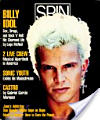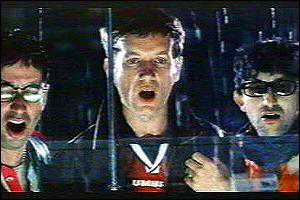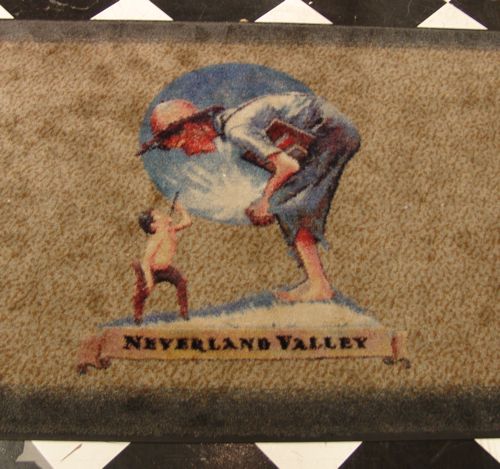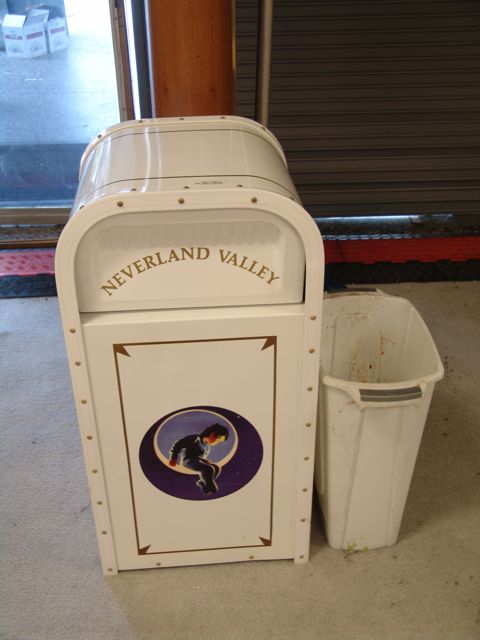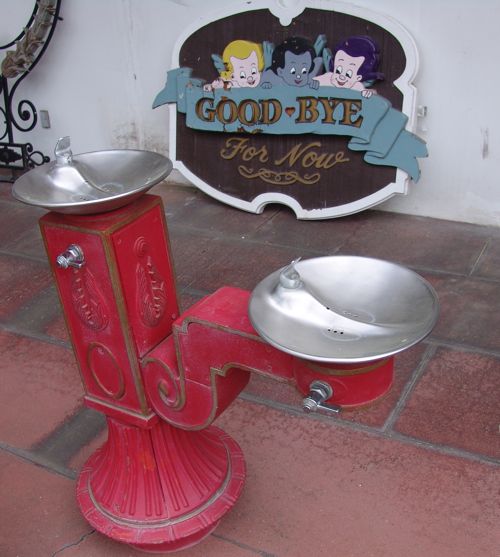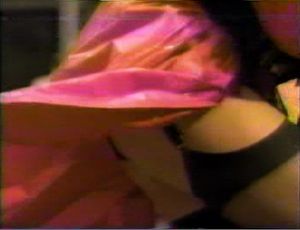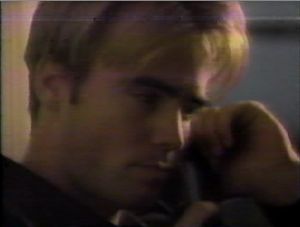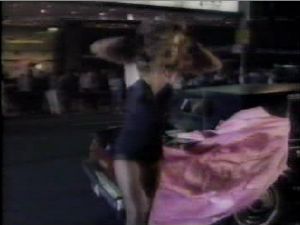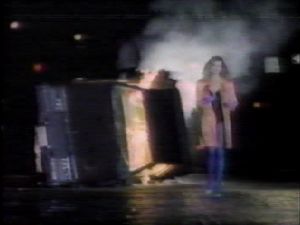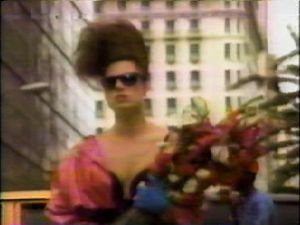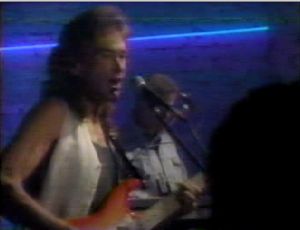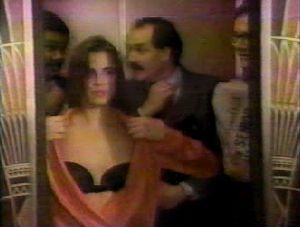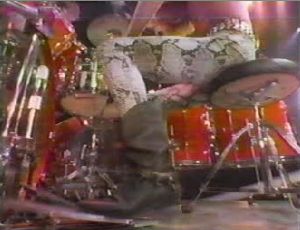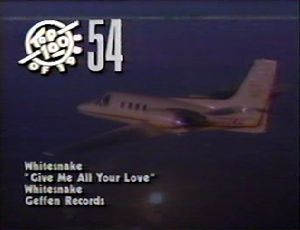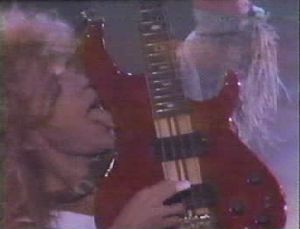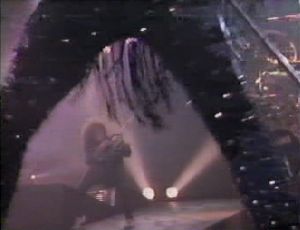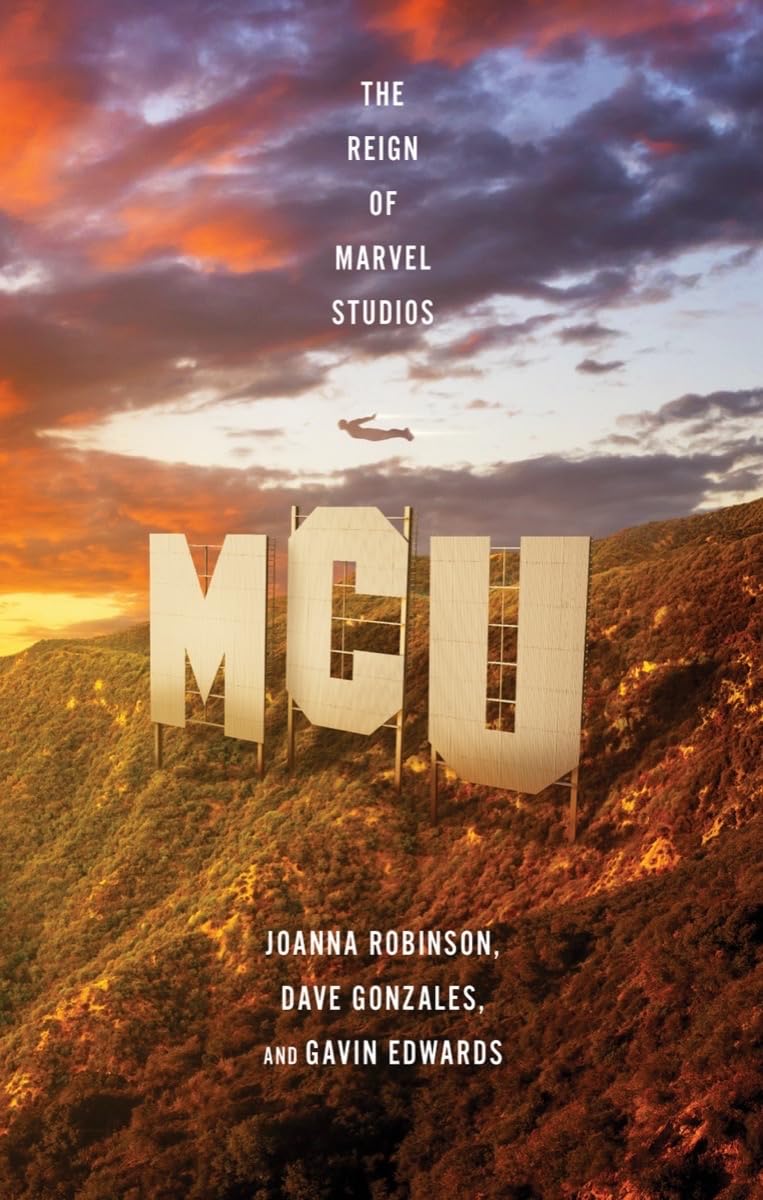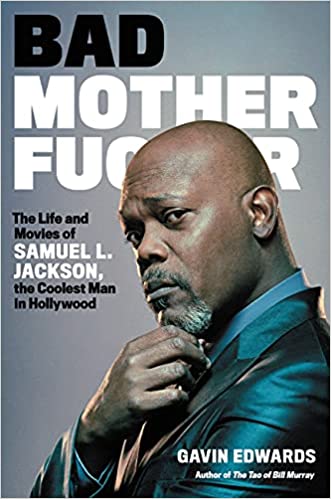(New to the countdown? Catch up here.)

We hear a horribly dated plinkety synth sound; it sounds like somebody got a new keyboard for Christmas 1987 and left it on the preset. On our video screen: a New York City street scene, specifically a Hot Video Babe walking down the sidewalk. She is walking two rottweilers. She is wearing a short peach jacket; it’s unbuttoned, so that we can catch glimpses of the skimpy black outfit underneath. She is styled in an angular way that in this era of MTV signified either “intimidating high-class woman” or “Sheena Easton.”

The Hot Video Babe is arguing with a boyfriend who’s clearly not worthy of her: short, balding, smoking a cigar. The lyrics start: “You called me up this morning, told me about the new love you found.” We quickly cut away from the cigar smoker to a more suitable proxy for 41-year-old lead vocalist Bill Champlin: a young handsome man with bleached hair, moping around an expensive apartment. Bleach Job talks on the phone, pretending to be happy for his ex-girlfriend. He slams down the receiver, and we learn that the art director found an antique rotary phone at the prop house.
Wearing sunglasses and a gray tank top, Bleach Job walks down the middle of the street–New York is pretty tolerant of jaywalkers, but he’s pushing it. An old-fashioned yellow Checker cab, selected by the same art director, pulls up to the curb. A different Hot Video Babe steps out with an armful of packages; as the chorus swells, she drops them into a puddle.
The reasonably catchy chorus: “If you see me walking by / And the tears are in my eye / Look away, baby, look away.” This is another Diane Warren composition (her second in the countdown after Belinda Carlisle’s “I Get Weak”), and although it’s an effective piece of pop craft, it’s also utter dreck. We cut to a nighttime scene: in the back of a limo, Bleach Job (still wearing his sunglasses) is arguing with Hot Video Babe (the first one, I think, although all the women in this video are similarly styled brunettes, so it’s hard to tell).

The limo parks in Times Square, right in front of a Sbarro and a movie theater playing Running on Empty. Alternately waving her hands and holding her head, HVB #1 steps out of the limo. She’s wearing black gloves and what looks like a pink taffeta dress. The limo pulls away, but her dress is caught in the door. She spins around, letting the dress (actually, the carefully draped pink sheet) fall off her to reveal sheer black foundation garments. She looks pissed, rather than embarrassed.
Cut to another apartment, dimly lit, looking down on Times Square nighttime traffic. There are three more Hot Video Babes; like all the other women in this video, they are wearing hot pastel outfits, accessorized with black. Two of them are sitting; the third one pirouettes to the refrigerator and opens it, revealing that it holds no food but does contain an industrial-strength light source on loan from Shea Stadium.

Still nighttime: one of the Hot Video Babes walks down the middle of the street of the meatpacking district. Behind her is a car, tipped over on its side, going up in flames. She doesn’t look back, but strips off one piece of jewelry after another, casting them aside. When she gets far enough away, the car explodes in an impressive fireball.
Dawn. Bleach Job stands on top of a tall building, looking at the Empire State Building. Later, on another balcony, two more hot video babes are playing with a telescope. One of the babes twirls a gold watch around her finger. She dips it in a glass of red wine, and then tosses it over the side of the building. We get reaction shots from Bleach Job, looking up as if the watch landed at his feet, and a third HVB with a bow in her hair, sunning herself and laughing. This is where I gave up on trying to figure out any semblance of a plot; I can’t tell if these women were dating Bleach Job or the cigar smoker or both. Judging by the wholesale disposal of jewelry, either there’s been a bunch of unpleasant breakups or this is a crowd really into conspicuous consumption. And don’t even ask me why that car was on fire.

One more HVB walks down a city street, hair piled high and perpendicular, wearing a hot pink vinyl dress that, unsurprisingly, is coming open at the front. She’s holding a large bunch of flowers, but she’s struggling with them, giving us an opportunity for a closeup of her garters and stockings. She throws the flowers up in the air. Bleachie leans against a wall; the camera pans by him and into a blue-lit nightclub. Three minutes into a four-minute video, we get our first view of the band.

Peter Cetera had been gone from Chicago for three years at this point; replacing him on bass and vocals was the eighteen-years-younger Jason Scheff. Vocals on “Look Away,” however, were handled by guitarist Bill Champlin, who had been in the band since 1981. Judging by this video, he’s still rocking his haircut from 1973. He’s also got a black tank top, a white vest, and exactly two stage mannerisms: bouncing on the balls of his feet and pumping his right fist in the air. We get a quick overview of all eight members of the band; the horn players try to look busy despite not having anything to do on this song.

A Hot Video Babe gets into a hotel elevator, drying off her hair with a towel, wearing a hot-pink bathing suit. There are already three men in business suits there. The doors close and open again; the HVB is pulling an orange jacket over a black bra, implying that she completely stripped down and changed clothes in the elevator. Also, her hair is now perfectly coiffed. One man wipes his brow, another adjusts his tie, the last one fans himself with a newspaper. She leaves the elevator with a smirk.
Obviously, this clip was intended to ramp up the sex appeal of the unphotogenic Chicago; it’s far from the only video on this countdown to do that, just the most relentless. The unusual thing about it is that while other prurient videos of the era (Poison, Van Halen) rely on the stripper trope, the girls in “Look Away” are presented as confident, tough women whose clothes just happen to keep falling off them. So they look more like classic cheesecake illustrations–the sort of stuff you would have seen in 1950s men’s magazines with names like Bachelor or Cad. Even when Chicago are trying to be crass, it feels dated.
Another HVB runs into an open fire hydrant, deliberately soaking herself.
Bleach Job is back on the phone in his apartment, lip-synching the lyrics “I’m really happy for you,” looking a little more sincere this time. In the nightclub, Champlin holds the microphone and looks into the middle distance, wondering how long Chicago can keep giving their albums numbers instead of names.
“Look Away” topped the singles charts for two weeks (putting it in a three-way tie for Chicago’s biggest hit, alongside “If You Leave Me Now” and “Hard to Say I’m Sorry.” You can watch the video here.
posted 24 June 2010 in 1988. 17 comments
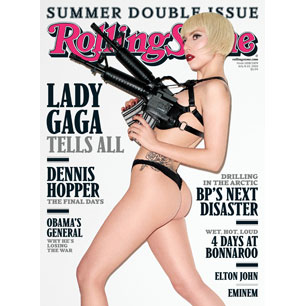 The latest issue of Rolling Stone, still on newsstands, has an article by me about Aziz Ansari, who you might know from Parks and Recreation, Funny People, Human Giant, or his recent gig hosting the MTV Movie Awards. Since my profile didn’t get Ansari summoned to the White House and then fired, I have to regard it as a failure.
The latest issue of Rolling Stone, still on newsstands, has an article by me about Aziz Ansari, who you might know from Parks and Recreation, Funny People, Human Giant, or his recent gig hosting the MTV Movie Awards. Since my profile didn’t get Ansari summoned to the White House and then fired, I have to regard it as a failure.

